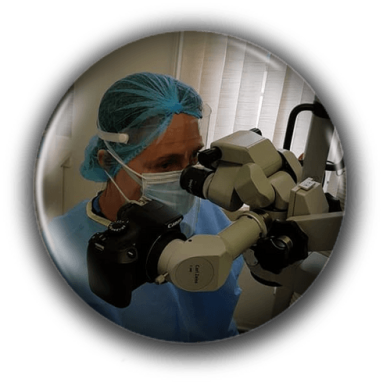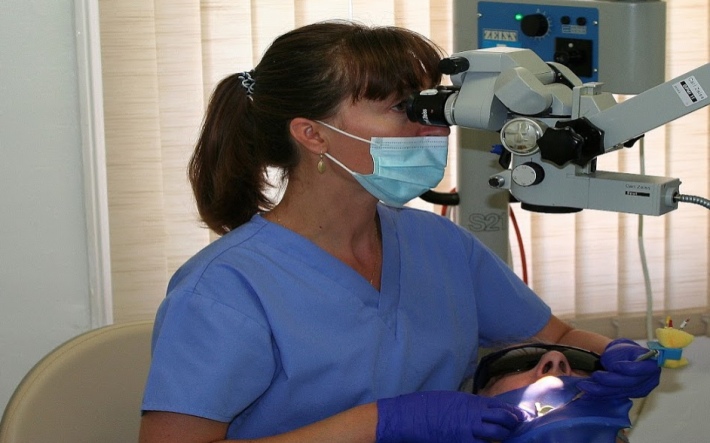The microscope - excellence in dentistry practice.
At Park Street Dental Practice,
Dr Diana Dumitriu Msc Endodontisc uses a exclusively microscope for root canal treatment.
The microscope and the skill to use it are great assets for the practice of endodontics.
The microscope has been used in surgery for many decades. In the past 20 years the microscope has been introduced in dentistry too, with particular emphasis in endodontics (root canal treatment).
Today the world’s leading practicing dentists and researchers are in agreement that the dental microscope contributes tremendously to the success of root canal treatment.
Due to coaxial illumination and magnification (up to 20 times) the microscope enables the dentist to see important internal anatomical features .The human naked eye perceived details of 200 microns while magnification with microscope makes visible details of 10 microns. Just for comparison, the tip of dental probe measures 40microns and often the root canal orifices initially have a diameter of 20microns.
The microscope helps in:
- Diagnosis- often fine fracture (cracks) are not visible with the naked eye
- Canals that are difficult to localize: some canals may be splitting while often there may be additional abnormal canals
- Obliterations and calcifications occur in many cases and prevent canal cleaning , shaping and filling, unless they are efficiently spotted and removed
- Open apex: if the tip of the root is unusually large visualization aids the root filling
- Perforation repair and removal of separated instruments: broken files in the canals or canal wall perforations can only be visualized with the microscope.
CRACKED TEETH: When is a
crack too deep to deem a tooth non restorable?
This is a very important question: I come across cracked teeth almost every day.
Most - but not all - have been previously filled with amalgam. Some have no symptoms at all, some mild but also some acute symptoms and very often necrotic teeth.
It is obvious that if there is deep periodontal probing greater than 6mm corresponding to the fracture lines that the tooth is non restorable due to advanced periodontal condition caused by the
bacteria harboured in the fracture lines - which are very deep extended down the root .
But what if the marginal periodontium is still very well attached: meaning the fracture is more recent and possibly not very deep?





